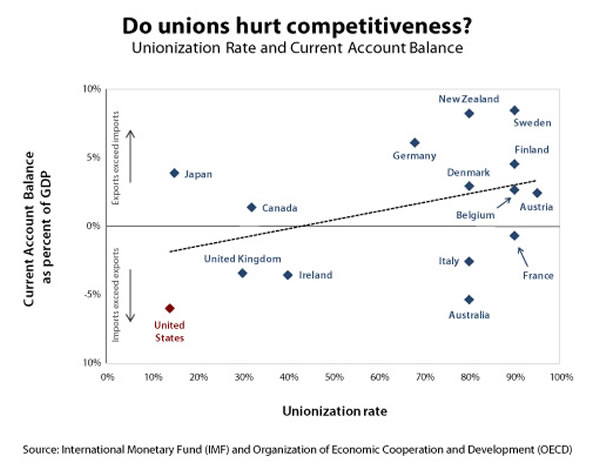Economic Snapshot for February 25, 2009
Unions do not undermine international competitiveness
by Josh Bivens
The claim is often made that unions are a potential drag on a country’s international competitiveness. Although there is no single, generally accepted measure of competitiveness with which to test such claims, many analysts use a country’s trade balance as a proxy for competitiveness. The figure below, which includes the United States and several of its rich industrial peers, examines the relationship between union coverage rates (the share of a nation’s workers covered by a union contract) and the current account balance (an indicator that captures the amount by which a country’s exports exceed its imports). 1

The comparison in the chart shows that there is no clear correlation between unionization and international competitiveness. In fact, if anything, the chart suggests there might be a positive relationship between union coverage rates and a nation’s current account balance—in other words, countries with higher union coverage rates also seem to have higher current account balances. Note that the United States has the lowest union coverage rate in the sample yet also has the biggest current account deficit. There is, in short, nothing about highly unionized economies that suggests they can’t be internationally competitive.
For more on other why unions do not make economies less competitive and some of the policies that do harm a nation’s competitiveness, read EPI’s Briefing Paper (#229), Squandering the Blue-Collar Advantage: Why Almost Everything Except Unions and the Blue-Collar Workforce Are Hurting U.S. Manufacturing (2009) by Josh Bivens.
Note
1. These data are for 2004, the last year for which the OECD published union coverage rates.
